What is a Squeeze Page?
by Fahad Muhammad

A squeeze page (also known as a capture page) is a type of landing page designed to capture email addresses from potential subscribers in exchange for something valuable, like discounts, free ebooks, whitepapers, or reports.
This blog post will walk you through the squeeze page basics, covering all the elements to help you create a squeeze page that converts.
Squeeze pages are an essential part of a marketing campaign because they are great for lead capture. The sole purpose of a squeeze page is to get visitors to opt into your email list so you can reach out to them with future offers.
High converting squeeze pages also help you push them further down your sales funnel and build a lasting relationship with them. So, what can you offer your visitors on your squeeze page?
All of the digital assets above are so-called lead magnets. They are offered in exchange for a visitor’s email address or other information that can later be used in email marketing campaigns.
But before you start creating your squeeze page and deciding what kind of downloadable content to offer visitors, you must determine what your visitors value the most. For instance, if your potential customers are beginners, they may find more value in an in-depth email course, a training program, or free ebooks rather than just a single infographic.
You can employ several strategies to drive traffic to your squeeze page and maximize its effectiveness. Use the power of search engine optimization (SEO) to optimize squeeze pages with relevant keywords and meta tags—this will help your page rank higher in search engine results and attract organic traffic.
Another way to get traffic to your squeeze is through social media platforms. Share your squeeze page across various social media channels and engage with your audience by creating compelling posts encouraging them to visit your page. Collaborate with influencers or run targeted advertising campaigns to expand your reach and attract potential leads.
| Squeeze Page | Landing Page | |
| Form Length | Typically shorter | Can vary in length |
| Page Length | Generally shorter | Can be longer |
| Feature-Focused | Primarily focuses on lead capture | Can have a broader range of features and goals |
| Traffic Sources | Primarily driven by targeted marketing campaigns, email lists, social media | Can come from various sources such as organic search, paid ads, social media, referrals, etc. |
| Purpose | Capture leads and build an email list | Serve multiple purposes like promoting products/services, collecting information, providing information, etc. |
| Call-to-Action | Often emphasizes the opt-in form | Can have different calls-to-action depending on the goal |
A good squeeze page consists of several key elements that work together to capture the visitor’s attention and encourages them to take action. Here’s a breakdown of the essential elements that make an effective squeeze page:
The first thing visitors notice when they land on your squeeze page is the headline. Create a headline that clearly communicates the unique value proposition of your offer, with no hidden messages or false promises. Make it relevant to the visitor’s needs or pain points and ensure a message match between the ad and page headlines.
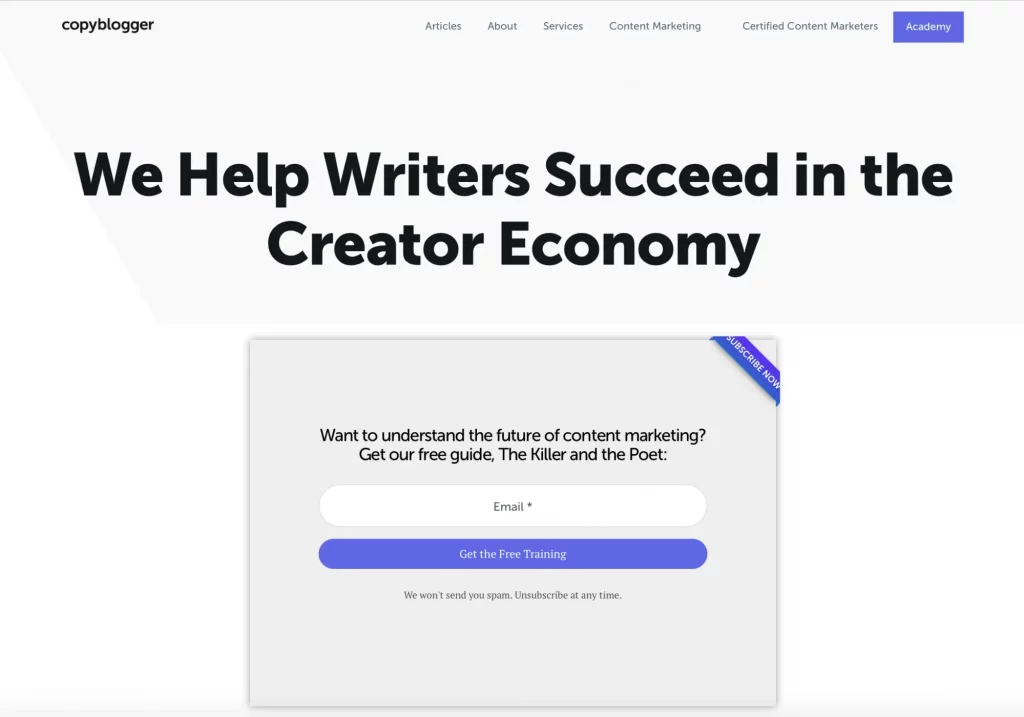
Your squeeze page copy should clearly articulate how your offer will benefit visitors and solve their problems. Keep the text easy to scan and understand, and avoid unnecessary jargon. For best results, format your copy in a way that is easy to digest for visitors, even if they’re skimming the page:
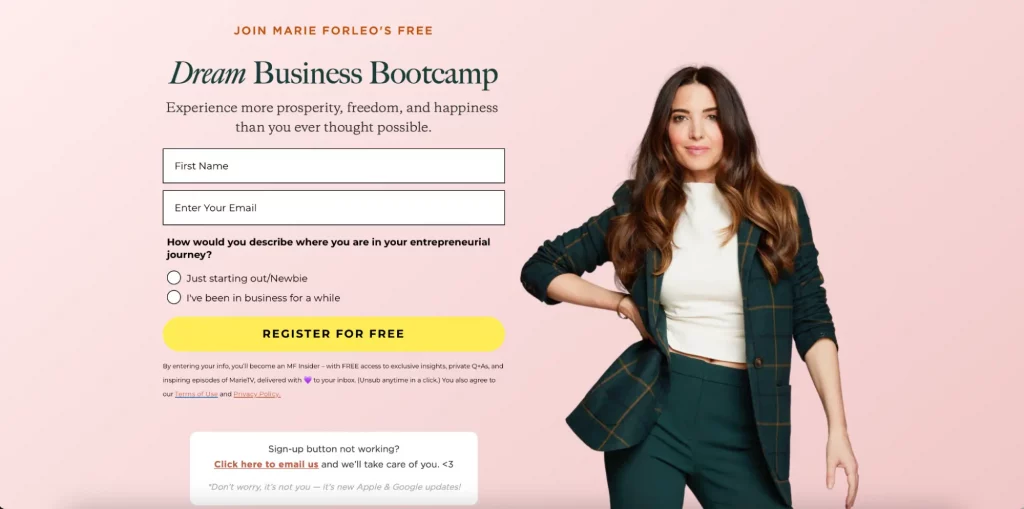
Include a visually appealing image that showcases the offer you’re promoting. This could be a graphic, product photo, or a snapshot of the offered content.
Make sure the form for collecting visitor information is simple and streamlined.Minimal form fields will allow for reducing friction and increasing conversion rates. Only ask for essential information like name and email address.
Use a clear and attention-grabbing call-to-action (CTA) button that stands out from the rest of the page design. Personalize the copy so it is relevant to the offer, and use contrasting colors to make it visually prominent.
Splash page and pop up squeeze page are the two popular types of a squeeze page:
Pop up squeeze pages use pop ups that suddenly appear over the content of a webpage, asking website visitors for their email address or promoting an offer. It’s best to avoid using pop up squeeze pages because they can disrupt browsing experience, annoy visitors, and make it harder to navigate your website.
Research by Jakob Nielsen found 95% of users dislike pop ups, and over 50% had a negative opinion of advertisers using them. Instead of using a pop up squeeze page, consider less intrusive options, such as scroll, slide-in, exit-intent, or end-of-article squeeze pages to strike a better balance.
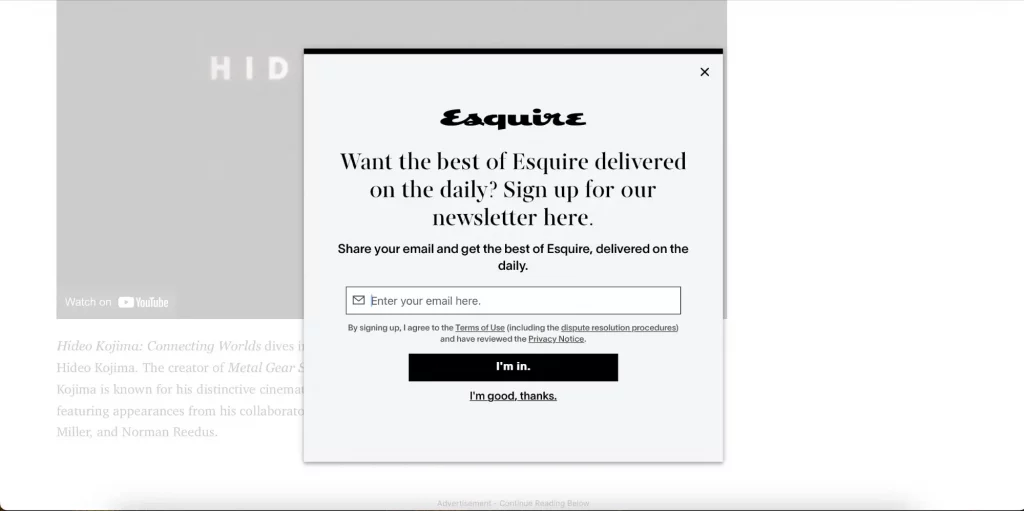
Splash pages are a more preferable alternative to create a squeeze page. A splash page serves as a custom landing page for users upon when they visit your website for the first time. By integrating your splash page with a squeeze page, you can showcase your offer immediately. However, there’s a risk that some visitors may exit the squeeze page without exploring further, missing your actual homepage.
To mitigate this risk, include a prominent “Decline” button that allows users to navigate directly to your homepage. Unlike traditional squeeze pages, the objective of a splash page is to encourage visitors to go to your main website while presenting them with an enticing offer. It’s important to ensure that the squeeze page design, messaging, and overall feel is consistent with your homepage.
Additionally, implementing a cookie will ensure that returning visitors bypass the splash page and go directly to your homepage. The example below illustrates this concept effectively, featuring a clear “Decline Offer” button for seamless navigation:
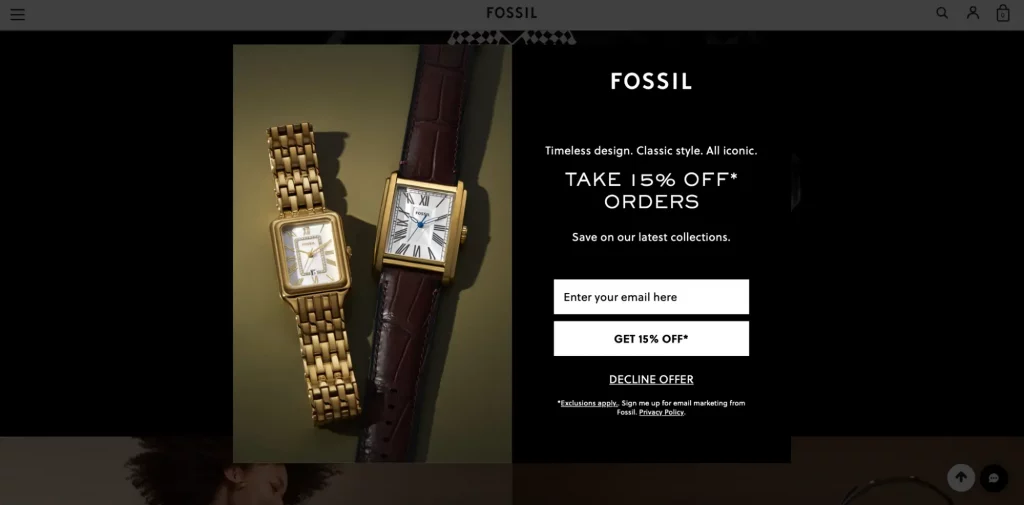
We’ve curated some squeeze page examples to inspire your next page.
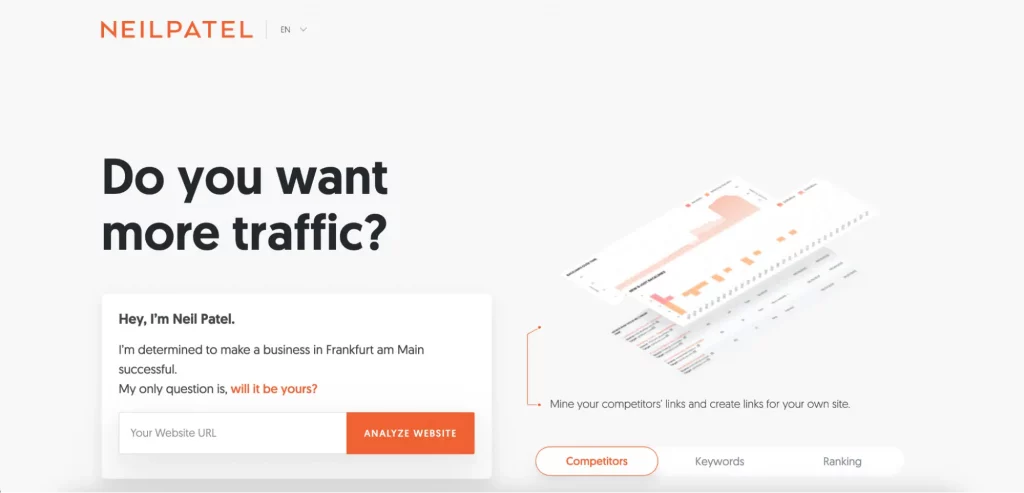
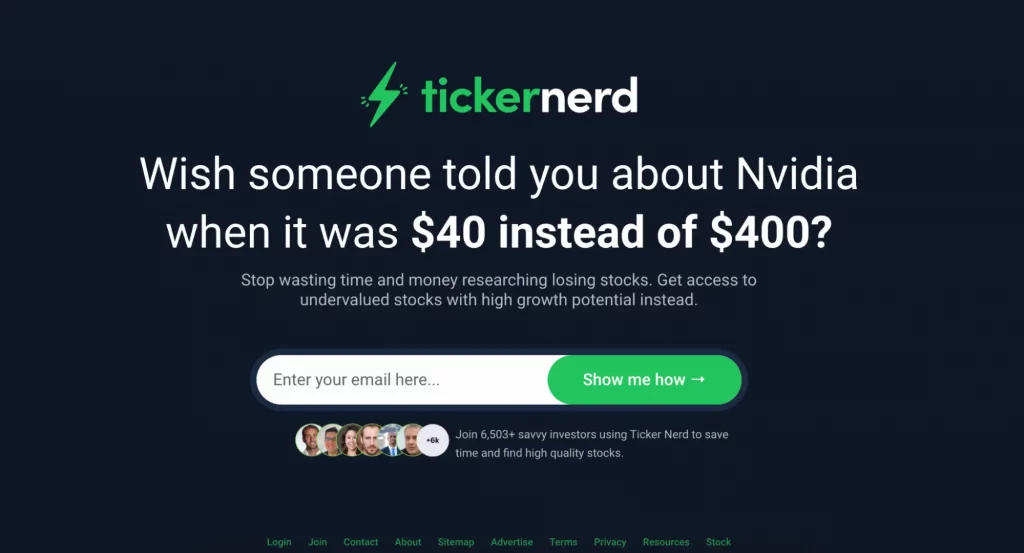
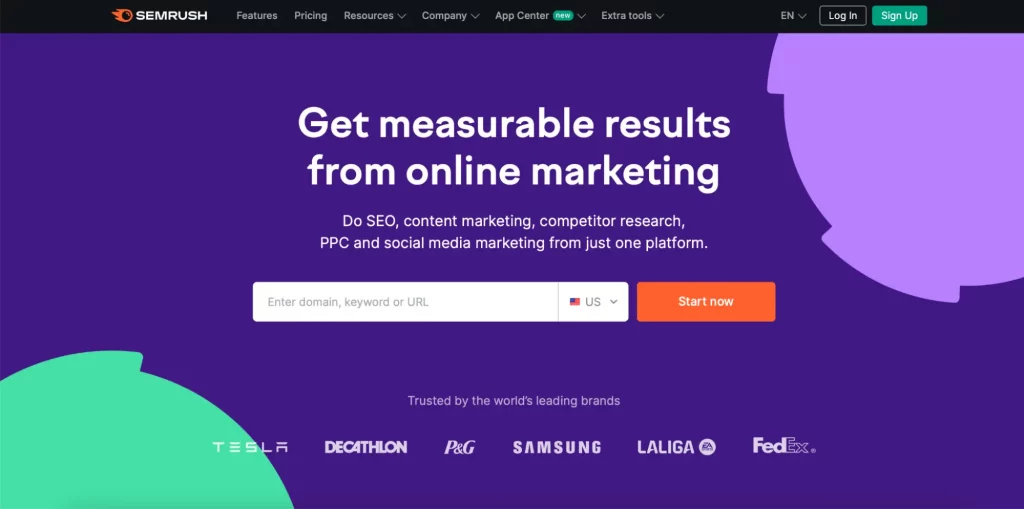
Communicate how your product or service can solve a problem or fulfill a crucial need for your target demographic. Whether addressing pain points, streamlining processes, or enhancing their overall experience—emphasize the positive outcomes your offer can deliver.
By presenting the benefits upfront, you capture your audience’s attention and create a compelling reason for them to take the desired action. Understanding how your offer adds value will motivate your audience to engage and convert.
Keep the content on your squeeze page concise and to the point. Craft your message with clear, compelling language that grabs attention and quickly conveys essential information. Avoid unnecessary details that might distract or overwhelm your audience.
A concise and focused approach ensures that visitors can swiftly grasp the value of your offer without losing interest. By presenting a streamlined message, you increase the likelihood of retaining your audience’s attention, guiding them toward the desired conversion action.
Tailor your squeeze page to precisely match the expectations and preferences of your specific target audience. Use language, visuals, and messaging that resonate with them, addressing their unique pain points or desires.
Speak directly to their needs and aspirations, demonstrating an understanding of what matters most to them. By creating a page that feels personalized and relevant, you establish a connection with your audience, making them more likely to engage with your offer.
Once you’ve successfully captured the email addresses of your leads, it’s essential to take advantage of the momentum by directing them to a meticulously crafted thank you page. This page is an opportunity to provide your audience with added value. Consider offering exclusive content that aligns with their interests, presenting a limited-time offer that sparks a sense of urgency, or sharing additional resources that complement the information they sought.
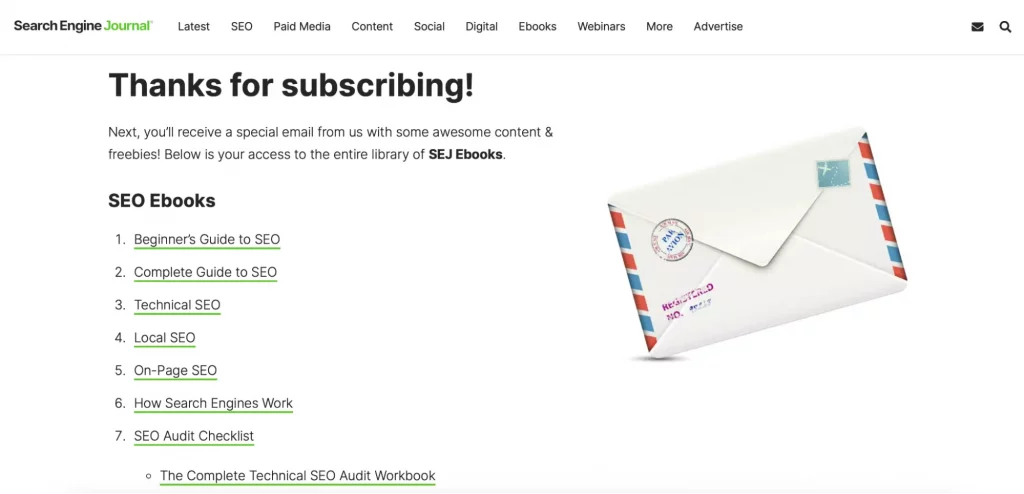
The key here is to make the thank-you page an extension of your value proposition, enticing your leads to delve deeper into what your brand offers. By doing so, you express gratitude and strategically encourage further engagement, significantly boosting the likelihood of conversion actions.
After your leads have entrusted you with their contact information, nurturing the leads and creating connections with them is crucial. This is where engaging emails come into play. Your emails aim to make your audience feel valued and excited about being part of your community. Beyond the welcome email, establish a consistent communication cadence to nurture the relationship over time.
Split your leads into distinct groups based on their preferences, interests, or position in the buyer’s journey. This segmentation enables you to customize your messaging and offers for each group, ensuring that your communication is highly relevant to their needs.
The beauty of segmentation lies in its ability to create a personalized experience for each segment, making your outreach more impactful.
When your audience receives messages that resonate with their interests, they are more likely to stay engaged and convert. In essence, segmentation becomes a powerful tool for maximizing the effectiveness of your marketing efforts by tailoring your approach to the unique characteristics of each lead segment.
A well-designed drip email campaign is a cornerstone of effective communication and relationship-building. Through strategic planning and execution, this campaign allows you to consistently deliver pertinent and valuable content to your leads over an extended period.
By spacing out your emails at intervals and offering insights, tips, or updates relevant to your audience, you stay top of mind and position yourself as a reliable and trusted resource. The power of a drip campaign lies in its ability to nurture leads through a gradual, informative journey, aligning with their pace and preferences.
This ongoing engagement is pivotal in keeping the relationship alive, gradually building a sense of loyalty. As your leads receive a steady stream of valuable information, they are more likely to view your brand as an industry authority, strengthening their connection and increasing the likelihood of conversion when the time is right.
Squeeze pages provide an additional opportunity to initiate and establish a relationship with your customers. To be successful with your squeeze pages, include the right elements on the page, A/B test the page frequently, and adjust the page’s elements as you see fit to score more conversions over time.
Get AI capabilities into the mix and create your squeeze page with Instapage.
Instapage makes it easier than ever to build, test, and optimize your pages with the power of artificial intelligence. Test it for yourself, sign up for an Instapage 14-day free trial today.
Try the most advanced landing page and CRO platform.